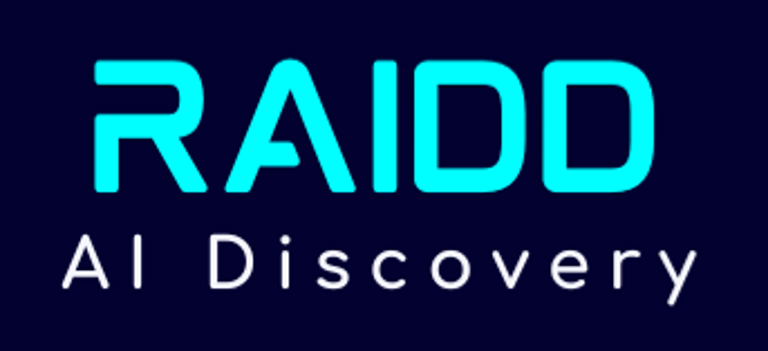The Evolution of ChatGPT: Exploring the Advancements and Applications of GPT-4
TOOLS


Discover how GPT-4 revolutionizes ChatGPT with smarter responses, multimedia capabilities, and real-world applications. Learn about its journey from earlier versions and explore its exciting new features, designed to make AI more accessible and useful for everyone.
Discovering GPT-4: What You Need to Know About the Latest in AI Technology
With the launch of GPT-4, ChatGPT has taken a giant leap forward in artificial intelligence. But what exactly can this new version do, and how can you make the most of it? In this article, we will break down the advancements in OpenAI's latest chatbot, compare it with its predecessor, and address some potential drawbacks, all in simple terms to help you understand this exciting technology.
The Evolution of ChatGPT
To appreciate the advancements of GPT-4, it's helpful to look back at the journey of previous versions:
GPT-1: Introduced in June 2018 with 117 million parameters, GPT-1 demonstrated the power of unsupervised learning in language understanding, predicting the next word in a sentence using books.
GPT-2: Released in February 2019 with 1.5 billion parameters, GPT-2 excelled in generating coherent multi-paragraph text. Its release was initially delayed over misuse concerns but became public in November 2019.
GPT-3: Launched in June 2020 with 175 billion parameters, GPT-3 revolutionized text generation, question answering, language translation, and code creation, showcasing its vast potential and usability.
Editor’s Note: “Parameters” are like the settings of a model that help it understand and produce text. More parameters mean the model can understand subtler nuances in language.
Key Improvements in GPT-4
You might be curious about what sets GPT-4 apart from its predecessors. Here are the main enhancements:
Enhanced Model Size and Structure: GPT-4 has more parameters (the components of the model that help it understand and generate text) compared to GPT-3. This allows GPT-4 to handle more complex language tasks and provide more nuanced responses.
Better Context Understanding: One of GPT-4's major upgrades is its improved ability to understand the context of a conversation. This means it can give more accurate and relevant answers, even when the input is ambiguous or complex.
Improved Handling of Long Texts: GPT-4 excels at managing and generating longer pieces of text. It can maintain coherence and relevance throughout lengthy documents, unlike GPT-3, which sometimes struggled with longer content.
Increased Accuracy: With its enhanced model, GPT-4 is more accurate in various language tasks, such as generating text, analyzing sentiments, and translating languages. This translates to a better overall user experience.
Editor’s Note: “Parameters” are like the settings of a model that help it understand and produce text. More parameters mean the model can understand subtler nuances in language.
Exploring GPT-4o: The Latest Upgrade
OpenAI has recently introduced GPT-4o, also known as "Omni," which takes the capabilities of AI even further.
GPT-4o demonstrates impressive multimedia mastery by processing text, images, audio, and video, making it a versatile tool for content creation and analysis. This capability allows it to analyze videos or audio clips and provide insightful summaries, enhancing productivity. For instance, it can create caricatures or custom fonts based on user descriptions, which is excellent for creative projects.
In custom font design, designers can describe a new font style, and GPT-4o will generate a custom font tailored to their specifications, making it invaluable for unique typography in various projects. Additionally, meeting transcriptions are made easier as GPT-4o can transcribe meetings with multiple speakers, providing accurate written records and ensuring all important points are captured and easily reviewable.
Furthermore, by watching lengthy videos, GPT-4o offers video summaries, saving users time by quickly conveying the main points without needing to watch the entire video. This suite of features makes GPT-4o a powerful tool for enhancing productivity and creativity in multiple domains.
Real-Life Applications of GPT-4o
GPT-4o’s new features have practical applications that can make a significant difference:
Customer Service: GPT-4o can handle inquiries through text or voice, providing instant, accurate responses. This improves customer support efficiency and satisfaction by operating around the clock.
Coding Assistance: Developers can use GPT-4o for coding help, from explaining problems to debugging code. This is a valuable tool for both new and experienced programmers, offering guidance and speeding up development processes.
Education and Tutoring: Students can benefit from GPT-4o’s personalized tutoring, which helps with understanding complex subjects, homework, and exam preparation, making learning more accessible and effective.
Creative Writing and Content Creation: GPT-4o assists writers and creators in brainstorming ideas, generating content, and overcoming writer’s block, boosting creativity and productivity.
Conclusion
GPT-4 represents a major upgrade for ChatGPT, with improvements in model size, context understanding, handling longer texts, and overall accuracy. GPT-4o builds on these advancements by incorporating multimedia capabilities, custom design features, and practical tools for a wide range of applications.
While GPT-4o offers numerous benefits, it’s important to be mindful of its limitations, such as the potential for inaccuracies and high computational demands. Nonetheless, both GPT-4 and GPT-4o mark significant strides in AI technology, offering powerful tools for diverse uses and paving the way for future innovations.
Glossary of AI Terms
GPT (Generative Pre-trained Transformer): A type of AI model that generates text based on patterns it has learned from large amounts of data.
Parameters: Elements of an AI model that help it understand and generate responses.
Context Understanding: The ability of an AI to comprehend the surrounding information in a conversation to provide relevant responses.
Multimedia Processing: The ability of AI to handle and generate content in various forms, such as text, images, audio, and video.
